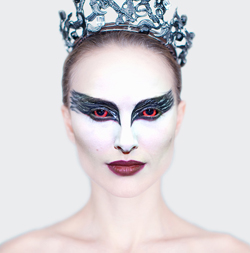 Everyone loves a chance to put an Oscar-winning actress down, now it’s Natalie Portman’s turn as her dance double for Black Swan claims credit for the performance.
Everyone loves a chance to put an Oscar-winning actress down, now it’s Natalie Portman’s turn as her dance double for Black Swan claims credit for the performance.
Sarah Lane, soloist with American Ballet Theatre, was hired to depict all the complex dance sequences that Portman, with only a year of training under her leotard (as opposed to the two decades that go into making a professional dancer), could never have pulled off. So far, so usual: stunt doubles are routinely hired for fight, chase, dance, ski-ing, driving or riding sequences that demand an elaborate set of physical skills. It’s almost part of the illusion expected when we go to the movies, that at some point, the actor will disappear back to their trailer and let a bewigged stunt person of approximately the same height and build get down to the death-defying gymnastics. There are two main reasons for this 1) stunt people are professionals who are really, really good at the physical stuff, and b) if it all goes pear-shaped, stunt people can be replaced halfway through principal photography, while a lead actor cannot.
Lane’s beef is not so much about the illusions created within the film-making process, which involved having Portman’s head digitally superimposed onto her body for the long shots, as she knew that was going to happen. She is more concerned about the way Portman’s people claimed credit for her dancing as part of her Oscar campaign. She accuses them of
“trying to create this facade that [Portman] had become a ballerina in a year and a half… How unfortunate it is that, as professional dancers, we work so hard, but people can actually believe that it’s easy enough to do it in a year. That’s the thing that bothered me the most”.
A big part of Portman’s pre-award press did include coverage of how she suffered for her art during the making of the film, both with the year of training beforehand, and the pressures put upon her during the actual movie to come up with convincing dance performances. And Academy voters love to see actors suffer, as well as push their physical limits. A movie is only one part of a media phenomenon, like Black Swan, which consists not just of the film narrative, but of all the narratives swirling round it – like the love story between Portman and her principal choreographer.
Darren Aronofsky jumped to his star’s defence for Entertainment Weekly:
Here is the reality. I had my editor count shots. There are 139 dance shots in the film. 111 are Natalie Portman untouched. 28 are her dance double Sarah Lane. If you do the math that’s 80% Natalie Portman. What about duration? The shots that feature the double are wide shots and rarely play for longer than one second. There are two complicated longer dance sequences that we used face replacement. Even so, if we were judging by time over 90% would be Natalie Portman.
And to be clear Natalie did dance on pointe in pointe shoes. If you look at the final shot of the opening prologue, which lasts 85 seconds, and was danced completely by Natalie, she exits the scene on pointe. That is completely her without any digital magic. I am responding to this to put this to rest and to defend my actor. Natalie sweated long and hard to deliver a great physical and emotional performance. And I don’t want anyone to think that’s not her they are watching. It is.”
Sarah Lane is a performer in her own right, an artiste who is used to getting credit and acclaim for her work. And she has a day job. No wonder she’s pissed – but she is in a uniquely privileged position to bitch about it. Portman is also a relatively soft target – it seems easier to accuse an actress of not being able to cut the physical stuff than a male star. No one would dream of making similar allegations about Jason Statham or Dwayne Johnson. There are legions of stunt artists out there who will forever remain silent about their contribution to the work of actors (usually macho action heroes) who claim that they, also, do all their own fighting, chase, dancing, ski-ing, driving or riding on screen. If these stunt doubles speak up, they never work again.
Much of Hollywood’s allure – and marketing – revolves around the larger-than-life abilities of “the talent”. The audience want to believe that what they see on screen is the singular performance of one very special person, when, in fact, it’s the result of hundreds of hours of work by whole teams of people, both on set and in post production. But bottom line is that the star always gets the credit – that’s showbusiness.
Natalie Portman Accused In Black Swan Row – Digital Spy
Darron Aronofsky Defends Portman – Entertainment Weekly
Actors Who Do Their Own Stunts – Moviefone
Hollywood Stuntman reveals tricks of trade – NPR interview with Hal Needham




